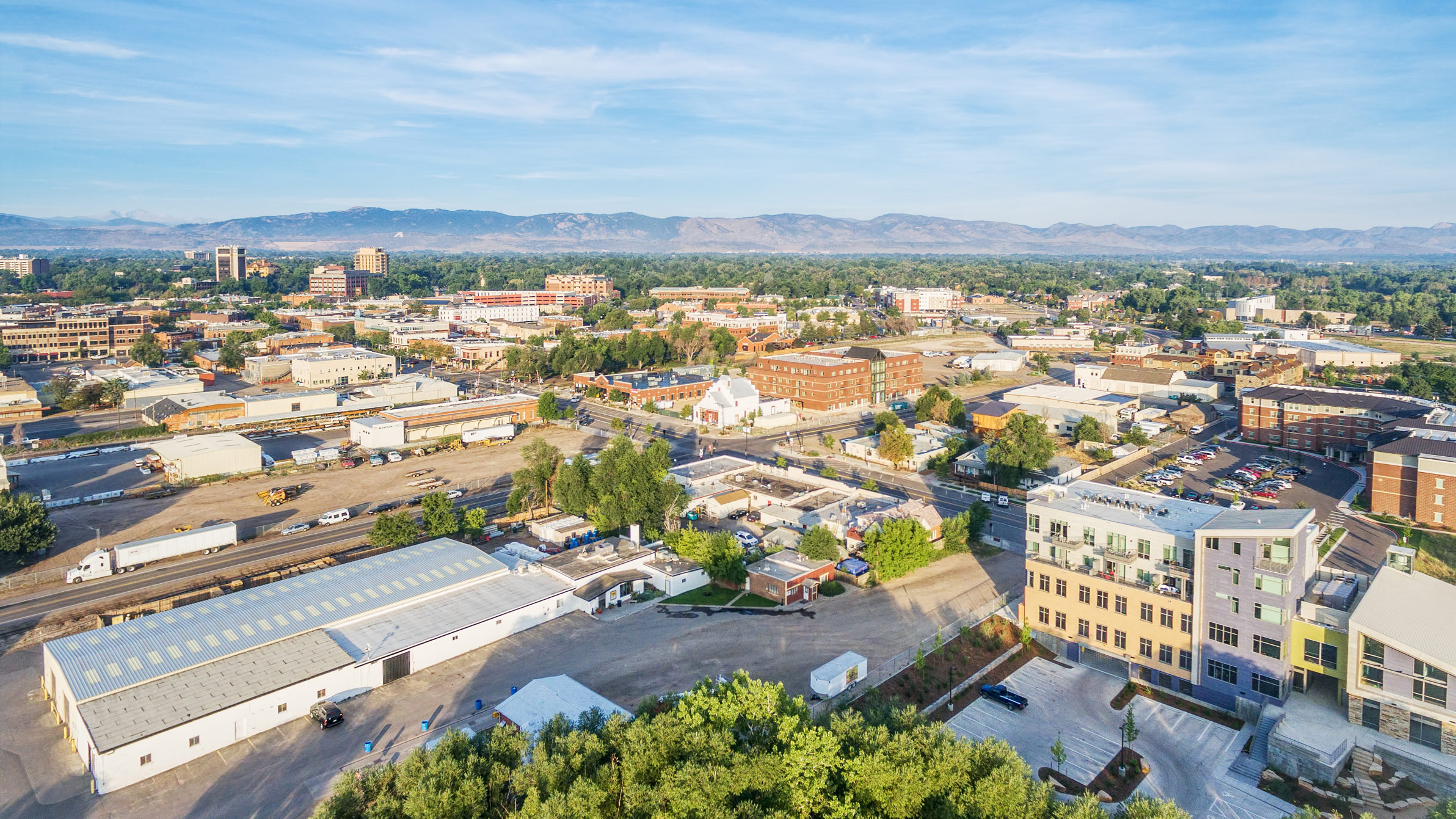University Cities share a singular DNA that produces a constellation of magical effects: highly educated populations, innovative economies with high rates of entrepreneurship, outsized arts and culture sectors, and large nonprofit sectors that indicate a vibrant civil society. These traits mirror the large, coastal cities, but they happen in mid-sized cities with low unemployment, low-cost living, and extremely low violent crime rates.
These Six Cities…
If one were designing a city from scratch for success in the 21st Century – where educated talent is to the knowledge economy what rivers and ports were to the 20th Century manufacturing economy – then it might look like a University City.
The six cities that have major research universities in their urban cores, have metropolitan populations between 250,000 and one million, and have more than 10 percent of their populations consisting of students, are: Ann Arbor, Durham Chapel-Hill, Fort Collins, Lexington, Lincoln, and Madison.

LEXINGTON, KY |

ANN ARBOR, MI |

DURHAM, NC |

FORT COLLINS, CO |

MADISON, WI |

LINCOLN, NE |
Seemingly purpose-built for the 21st Century knowledge economy.
University Cities are a new species of city
These six cities have the advantages of the big coastal cities…
-
FULL OF EDUCATED TALENT
-
HIGHLY ENTREPRENEURIAL
-
ECONOMICALLY INNOVATIVE
-
ARTS & CULTURAL INSTITUTIONS
-
LOW LIVING COSTS
-
LOW UNEMPLOYMENT RATES
-
LOW CRIME RATES
FULL OF EDUCATED TALENT…
70% GREATER THAN THE NATIONAL AVERAGE
PERCENT OF POPULATION WITH BACHELORS DEGREE OR ABOVE 2016
Source: 2016 Census Bureau
UNIVERSITY CITIES0%
Cities of the same size0%
Large Metros0%
National Average0%
HIGHLY ENTREPREN-
EURIAL…
BUSINESS STARTS PER 100,000 2014
Source: 2014 Census Bureau
UNIVERSITY CITIES
23% GREATER THAN THE SIMILARLY SIZED CITIES
LARGE METROS
CITIES OF THE SAME SIZE
NATIONAL AVERAGE
ECONOMICALLY INNOVATIVE…
GDP GROWTH 2009-2016
17% GREATER THAN THE SIMILARLY SIZED CITIES
Source: 2016 U.S. Bureau of Economic Analysis
UNIVERSITY CITIES - GDP Growth (%) 2009-20160%
Cities of the same size0%
Large Metros0%
National Average0%
AND HAVE OUTSIZED ARTS & CULTURE SECTORS…
ARTS AND CULTURAL INSTITUTIONS PER 100,000
2016 44% GREATER THAN SIMILARLY SIZED CITIES
Source: 2016 Census Bureau
UNIVERSITY CITIES
ARTS AND CULTURAL INSTITUTIONS /100K
LARGE METROS
CITIES OF THE SAME SIZE
NATIONAL AVERAGE
LOW LIVING COSTS…
MIT LIVING WAGE INDEX 2016
Add source: 2018 MIT Living Wage
$ 13.01
UNIVERSITY CITIES
The cost of living in University Cities is 8% lower than in large metros
$ 13.17
LARGE METROS
$ 12.52
CITIES OF SIMILAR SIZE
LOW UNEMPLOYMENT RATES…
AVERAGE UNEMPLOYMENT RATE 2017
Source: 2017 Bureau of Labor Statistics
3.00 %
UNIVERSITY CITIES
38% LOWER THAN LARGE METROS
4.80 %
CITIES OF SIMILAR SIZE
4.30 %
LARGE METROS
4.70 %
NATIONAL AVERAGE
AND VERY LOW VIOLENT CRIME RATES…
VIOLENT CRIMES PER 100000
Source: 2016 Federal Bureau of Investigation
UNIVERSITY CITIES
43% LOWER THAN SIMILAR SIZED CITIES
LARGE METROS
CITIES OF THE SAME SIZE
NATIONAL AVERAGE

While everywhere else suffered in the recession, this new urban species somehow kept unemployment, costs of living, and crime rates down. What we can learn from ‘University Cities.’

Post-industrial City. Metropolis. Border Town. Tourist Mecca. We like to classify our cities, giving them labels that signal what makes them tick, why they’re special.
Now, data suggest there’s another urban typology to add to the list: The University City. Senator Daniel Patrick Moynihan once said, “If you want to build a great city, create a great university and wait 200 years.”

This group, which he calls “university cities,” have distinct characteristics that make them different from smaller college towns or major cities with big research universities. And those characteristics translate into big economic development opportunities in the 21st century’s knowledge-based economy.
2017 University Cities Conference
Jim Gray, Mayor of Lexington. Conference welcome.
What Is A University City?
Scott Shapiro, Lexington Chief Innovation Officer.
The Value of University Cities.
Edward Glaeser, PhD, Professor of Economics, Harvard University, and author of Triumph of the City.
What do concentrations of human capital in University Cities produce?
Ken Troske, PhD, Professor of Economics, University of Kentucky.
What do concentrations of human capital in University Cities produce?
Eli Capilouto, DMD, Sc.D, president, University of Kentucky.
University Cities: The UK perspective.
Jim Gray, Mayor of Lexington; Chris Beutler, Mayor of Lincoln, and Wade Troxell, Mayor of Fort Collins.
Governing a University City + policy swap.
Omar Blaik, CEO, U3 Advisors.
From college town to University City.
Benjamin Kennedy, Kresge Foundation; Katie Appel Duda, Bloomberg Philanthropies; and Lilly Weinberg, Knight Foundation.
Impact philanthropy and University Cities.
Warren J. Wilson, YARDSTK; Steve Dauphin, The Kirchner Group and Bonaventure Capital; and James Lima, James Lima Planning + Development.
Entrepreneurship and innovation in University Cities.
John Burkhardt, PhD, Professor of Education and Founding Director of the National Forum of Higher Education for the Public Good, University of Michigan; Howard Lazarus, City Administrator, City of Ann Arbor; and Jim Kosteva, Director of Community Relations, University of Michigan.
Ann Arbor case study: equity in University Cities.
Scott Andes, Brookings Institution.
University-anchored innovation districts.
University Cities Conference Closing
University Cities Conference Closing
CONFERENCE SPONSORS
2018 UNIVERSITY CITIES SYMPOSIUM
2018 UNIVERSITY CITIES SYMPOSIUM
2018 UNIVERSITY CITIES SYMPOSIUM
CONFERENCE QUOTES

University Cities Mirror The Largest Cities
University Cities mirror the largest cities in the country in really important ways. They have lots of talent, entrepreneurship, resilient economies, large nonprofit sectors. But unlike the large coastal cities, they have very low cost, very low crime, and low unemployment rates.
Scott Shapiro Chief Innovation Office, City of Lexington

We Think of Our City As A Platform
When you have alignment between public sector, private sector and a research university, you can leverage it in ways that I think are profound… We think of our city as a platform... Everyone in your community is an active participant, is a co-creator... We incubate grow, expand, and attract.
Wade Troxell - Fort Collins Mayor

University Cities Are Amazing Places
I think we can all agree that University Cities are amazing places; they are the places where the future of America looks brightest. Part of the great challenge is figuring out how to harness that magic in service of the country as a whole.
Ed Glaeser - Professor of Economics, Harvard University

University Cities Are In Some Ways Actually Innovation Districts
University Cities are in some ways actually innovation districts in and of themselves. They represent a nontrivial amount of your state’s research but they also cluster amenities where people want to live work and play.
Scott Andes - the Brookings Institution








